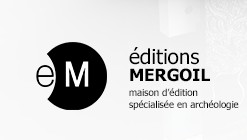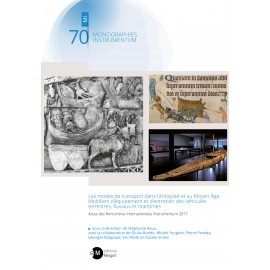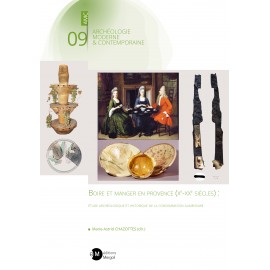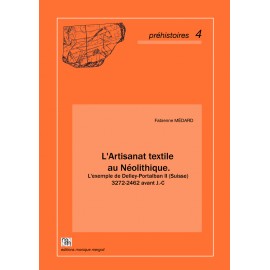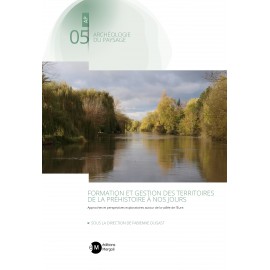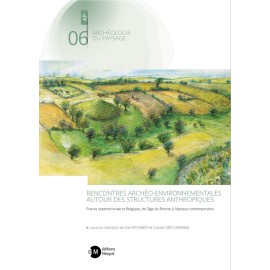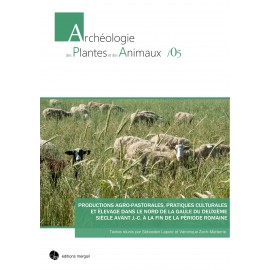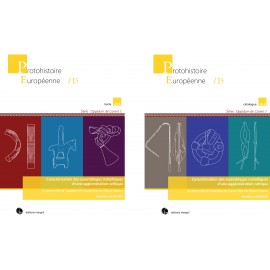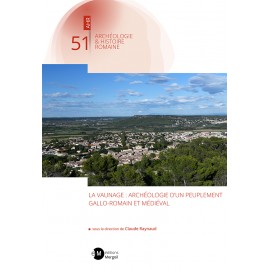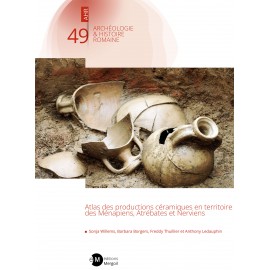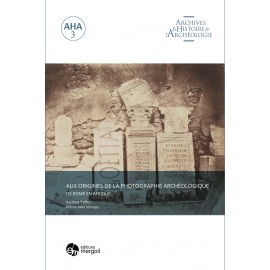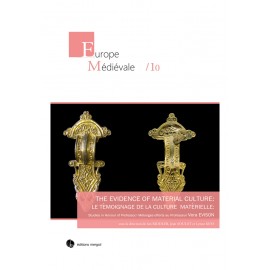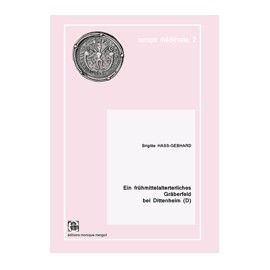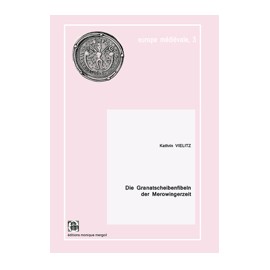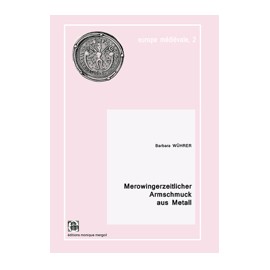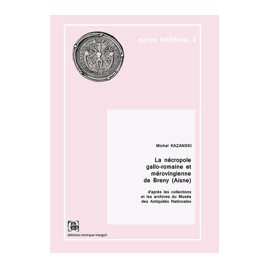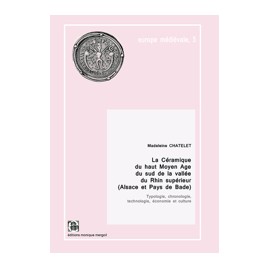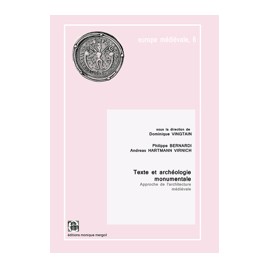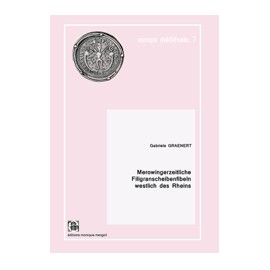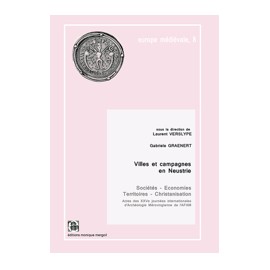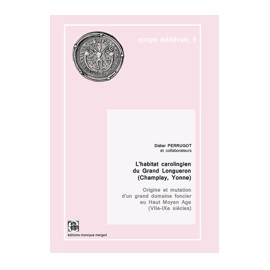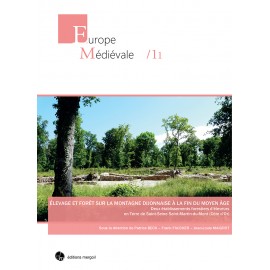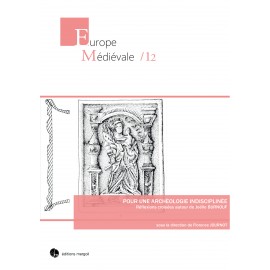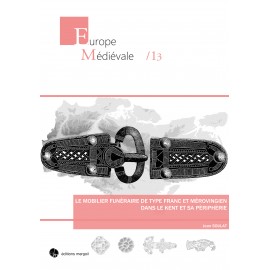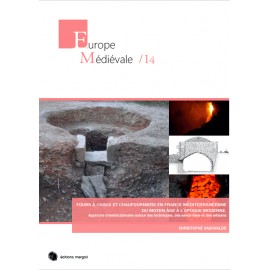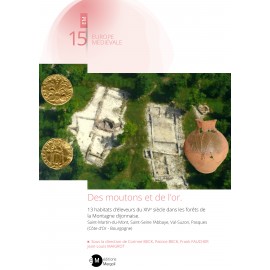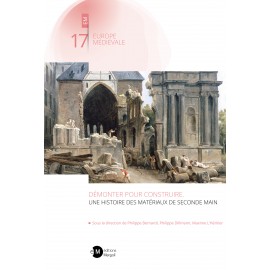No products
Prices are tax included
Product successfully added to your shopping cart
There are 0 items in your cart. There is 1 item in your cart.
Europe Médiévale
- Archéologie et Histoire Romaine
- Archéologie Moderne et Contemporaine
- Archéologie des Plantes et des Animaux
- Archéologie du Paysage
- Archives & Histoire de l'Archéologie
- Europe Médiévale
- Monographies Instrumentum
- Préhistoires
- Protohistoire européenne
- Research Protocols
- Off collections
- Les cahiers de saint-michel de Cuxa
- Second-hand
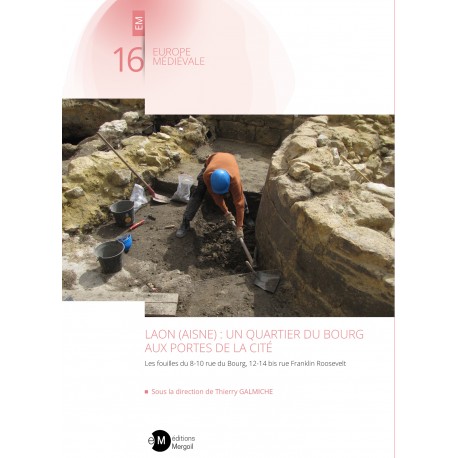 View larger
View larger Laon (Aisne) : un quartier du bourg aux portes de la cité
EM-16
New
EM-16 - LAON (AISNE) : UN QUARTIER DU BOURG AUX PORTES DE LA CITÉ. Les fouilles du 8-10 rue du Bourg, 12-14 bis rue Franklin Roosevelt.
Sous la direction de Thierry GALMICHE
2024, 284 p., nb. ill. (ISBN : 978-2-35518-137-5)
More info
A construction of an apartment building led to the realization of an archeological dig in the narrowest upper part of the town of Laon.
Ceramic evidence suggested the proximity of a dwelling from Roman period. In the early Middle Ages, dwellings were served by a road and characterized by handicraft activities and gardening. In the Twelfth century, this area of the town was subject to significant improvements. Taking advantage of the favorable topographic position, Louis VII built a royal palace there between 1143 and 1179. Around 1212, a large tower was attached to the palace to control access to the fortified City. Beyond this entrance, was located the suburb, called Bourg. The excavated areas are situated at the foot of the royal palace. During the excavation one of the two towers of Lupsault gate was also discovered. The gate was built in the beginning of Thirteenth century and was the main access to the Bourg walls. Remains of the curtain wall, linking the gate to the royal palace, have also been revealed. For strategic reasons, no new constructions were built along the curtain wall and the royal palace during this period.
At the end of the Fourteenth century, Lupsault gate was a part of a complex defensive structure called Lupsault fortress. After the military improvements the curtain wall, linking the Lupsault gate to the royal palace, became obsolete. The wall had already been partially leveled off. Remains of housing, built along that ancient wall, were discovered and excavated. The central position of the studied area, boarding the main traffic roads, explains the density of the discovered buildings and the development of trade: an inn, a hotel with a sheep sign and another one with a boar’s head sign. Numerous preserved artifacts prove the vitality of economics activities as from the Tenth century.
To improve the circulation, the Lupsault gate was destroyed in 1799. Later, in 1831, the royal palace and the Philippe Auguste tower were demolished to allow the construction of the new city hall. Until the beginning of the Twentieth century, the division of land, adopted at the end of the Middle Age, had changed very little. The boar’s head sign hotel disappeared in 1913. A general leveling of the area was carried out for the building of the retail chain Nouvelles Galeries, and later, Monoprix, finally demolished in 2011.
with contributions from :
Élise Pichet, Sébastien Porcheret, Émilie Briand, Thibault Cardon, Benoît Clavel, Benjamin Dufour, Gaëtan Jouanin, Matthieu Le Bailly, Vincent Le Quellec, Céline Maicher, Sandrine Mouny, Jean Soulat et Carole Vissac
SOMMAIRE :
AVANT-PROPOS
PRÉFACE
LE CADRE DE L’ÉTUDE ET LES MODALITÉS D’INTERVENTION
Le cadre naturel
Le contexte historique et les problématiques de la recherche
L’apport des sources historiques (Sébastien Porcheret)
Les carrières (Sébastien Porcheret)
Les caves (Sébastien Porcheret)
Le déroulé des interventions archéologiques et leurs modalités de mise en oeuvre
Les études scientifiques
ORIGINE ET ESSOR D’UN ÎLOT MÉDIÉVAL
La période antique et le haut Moyen Âge
Les niveaux des XIIe – XIIIe siècles
Les niveaux des XIIIᵉ-XIVᵉ siècles
Les niveaux du XVe siècle
Les niveaux du XVIᵉ siècle
Les niveaux des XVIIᵉ-XVIIIᵉ siècles
Les niveaux du XIXᵉ siècle et du début du XXᵉ siècle
Les restes archéologiques postérieurs à 1913
ASPECTS DE LA VIE MATÉRIELLE
La céramique (Sandrine Mouny)
Les terres cuites architecturales (Thierry Galmiche)
Le verre (Émilie Briand)
Le mobilier lapidaire (Thierry Galmiche)
Le mobilier métallique et le petit mobilier (Jean Soulat)
Les monnaies (Thibault Cardon)
Les restes paléométallurgiques (Vincent Le Quellec)
Les restes de faune (Gaëtan Jouanin)
Les vestiges osseux de poissons (Benoît Clavel)
CONCLUSION
BIBLIOGRAPHIE
